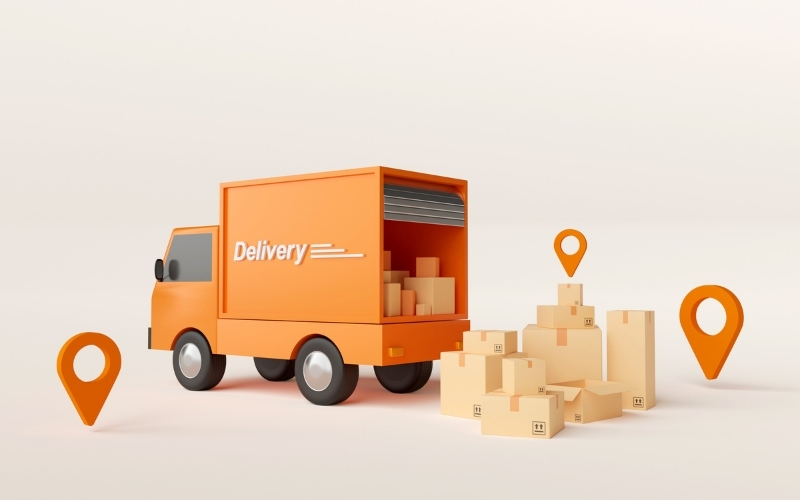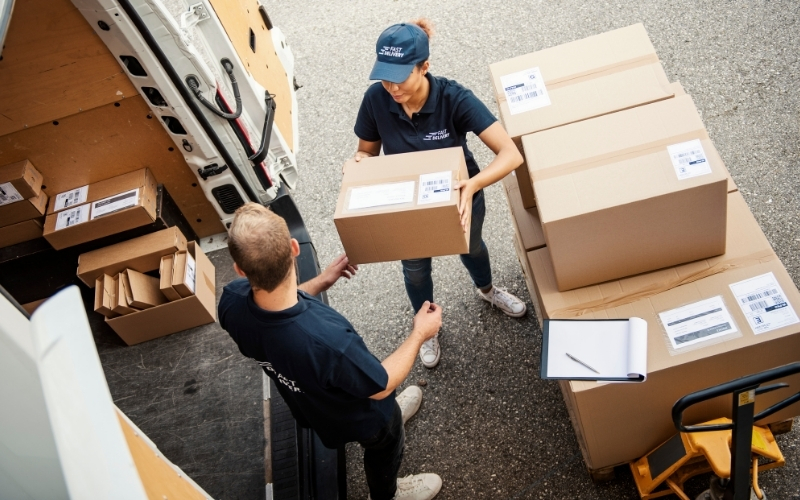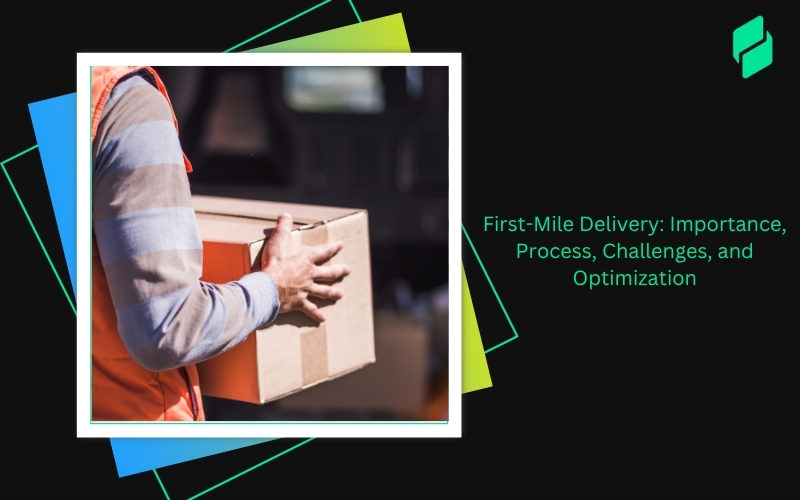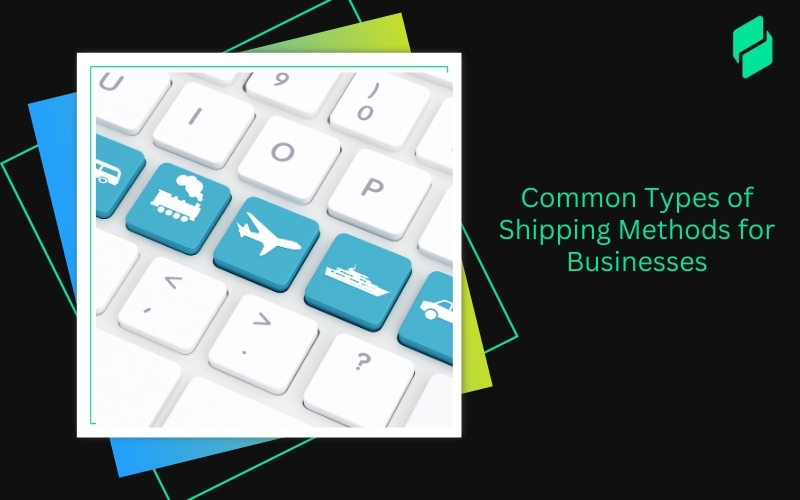Optimize your business: use unlimited savings with Pazago fulfilled now!
Get Started ->Are delays, high transport costs, or poor shipment visibility hurting your supply chain performance?
India’s major ports handled 853.57 million tonnes of cargo in April–March 2024–25, underscoring the growing volume pressure on origin-side operations. At the same time, government planning documents note urban freight and e-commerce growth, increasing the need for reliable first-mile pickups and temperature-controlled handling in cities.
For supply chain managers, freight forwarders, and e-commerce businesses, first-mile gaps, missed pickups, documentation holdups, and patchy visibility still ripple through the delivery chain, inflating costs and eroding customer trust. Understanding how first-mile delivery works helps identify bottlenecks early, tighten coordination, and keep the rest of your logistics network running on time.
Key Takeaways
- The first mile moves goods from suppliers to warehouses or ports, setting the stage for the rest of the logistics chain.
- Efficient first-mile operations reduce delays, lower costs, and ensure smoother downstream processes in the supply chain.
- Issues like unreliable carriers, documentation delays, and poor infrastructure can create bottlenecks, impacting overall logistics.
- Improving first-mile logistics enhances shipping reliability, cuts costs, and boosts supply chain efficiency, especially for exporters and SMEs.
What is First-Mile Delivery?
First-mile delivery refers to the initial stage where goods move from the manufacturer or supplier to a distribution center or warehouse. It sets the foundation for your entire logistics chain, influencing timelines, costs, and downstream efficiency. For you as a supply chain or logistics manager, this phase determines how smoothly products flow toward fulfillment. When managed well, first-mile delivery helps reduce handling delays, improves shipment visibility, and builds reliability across your eCommerce, retail, or distribution operations.

But what specific components must come together to ensure everything runs smoothly from the get-go? Let’s break down what makes a strong first-mile operation.
Also read: How Logistics Operations and Supply Chain Works
Key Elements of First-Mile Logistics
A strong first-mile framework depends on synchronized planning, compliant operations, and real-time visibility to ensure goods move seamlessly from origin to dispatch. India’s improved ranking, 22nd globally in international shipments and 38th overall in the 2023 World Bank Logistics Performance Index, reflects the country’s growing logistics maturity but also exposes gaps in first-mile execution that many businesses still face.
- Supplier and Production Coordination: Smooth coordination between factories, suppliers, and collection hubs ensures dispatch readiness, minimizing hold-ups before goods even leave the origin.
- Infrastructure and Connectivity: Access to quality roads, ports, and multimodal hubs directly impacts pickup efficiency and transit reliability across manufacturing clusters.
- Documentation and Compliance: Proper handling of e-way bills, customs forms, and shipping documentation ensures regulatory compliance and eliminates costly port delays.
- Packaging and Cargo Preparation: Secure and standardized packaging prevents product damage, especially crucial for exporters shipping via mixed modes or long-distance freight.
- Technology Integration: Digital freight platforms, tracking tools, and ERP systems provide visibility into first-mile movement, reducing manual coordination.
- Workforce and Fleet Readiness: Skilled loading teams and dependable transport fleets improve scheduling accuracy and support on-time dispatch performance.
- Collaboration Across Stakeholders: Consistent communication between exporters, 3PLs, and freight forwarders helps align schedules, equipment availability, and shipment priorities.
We’ve identified the necessary elements for a strong first mile, but how does the process actually unfold on the ground? Understanding the step-by-step flow helps in realizing how everything connects.
How First-Mile Delivery Works?
First-mile delivery defines how efficiently goods move from suppliers or manufacturers to hubs, shaping your entire logistics chain. Understanding each step helps reduce delays, optimize costs, and improve coordination across middle-mile and last-mile operations. Here’s how first-mile delivery works in the Indian logistics ecosystem:

1. Order Consolidation and Pickup Planning
Shipment readiness starts with accurate inventory verification, e-way bills, and invoices prepared for every order dispatched. Transporters schedule pickups using route planning and load optimization, avoiding empty runs and repeated trips. Local fleet operators often handle last-minute pickups, making coordination and timing critical for reducing delays. Proper consolidation ensures shipments reach regional hubs quickly and sets a smooth pace for your logistics chain.
2. Cargo Collection and Loading Operations
Cargo is collected from factories or warehouses and moved to designated consolidation or transit points efficiently. Packaging standards and labeling accuracy protect goods from damage during handling and transport, especially for mixed-product shipments. Mechanized loading equipment and trained staff reduce wait times, improving throughput at collection points. Consistent handling practices ensure cargo integrity while preparing shipments for seamless onward transportation.
3. Transportation to Distribution or Port Hubs
Goods are transported via road or rail to inland container depots, port terminals, or regional hubs for onward shipment. Real-time vehicle tracking and route planning mitigate delays caused by traffic congestion, poor infrastructure, or regulatory inspections. High-volume corridors such as Mumbai–Nava Sheva and Chennai–Ennore demand precise scheduling to avoid bottlenecks. Effective management at this stage ensures timely arrivals, reducing disruptions for middle-mile and last-mile deliveries.
4. Documentation and Customs Coordination
Accurate shipping bills, invoices, and certificates of origin accelerate customs clearance and minimize inspection-related delays. Compliance with DGFT regulations and port authority requirements prevents shipment holds or penalties. Digital platforms streamline document submission, reducing manual errors and improving operational transparency. Well-managed documentation ensures cargo proceeds smoothly to ports or transit hubs without avoidable delays.
5. Handover to Freight Forwarders or Carriers
Cleared cargo is handed to 3PLs, freight forwarders, or carriers for middle-mile movement to distribution centers or export ports. Sharing verified shipment manifests digitally ensures accountability and improves real-time visibility. Coordinated timing between carriers, warehouses, and port authorities reduces delays and miscommunication. Efficient handovers complete the first-mile cycle and establish a strong foundation for reliable downstream logistics.
See how Pazago can make every step of your first-mile delivery faster, smoother, and more reliable.
Now, let's take a closer look at the benefits of how the flow of goods continues after the first mile.
Benefits of Optimized First-Mile Logistics
Optimizing first-mile logistics directly improves efficiency, reduces costs, and strengthens reliability across your entire supply chain. Properly managed first-mile operations help you avoid bottlenecks, improve visibility, and maintain smooth downstream processes. Here are the key benefits of focusing on first-mile delivery optimization in the Indian context:

1. Reduced Shipping Costs Through Micro-Consolidation:
Rising port volumes, expected to hit 20.18 million TEUs by 2025, make shipment efficiency more important than ever. Micro-consolidation centers in tier-2 and tier-3 cities help aggregate smaller loads, lowering transportation costs and improving truck utilization. This approach cuts empty runs and enhances container fill rates. Exporters in the Tiruppur–Erode textile belt, for instance, consolidate cargo locally before dispatching it to Chennai Port, thereby reducing short-haul costs and enhancing port throughput reliability.
2. Lower Container Scarcity and Demurrage Costs
India’s growing export volume often leads to container scarcity and detention delays at major ports. Strategically placed inland depots and planned backhauls minimize empty container repositioning, saving both time and cost. Manufacturers near Sanand and Rajkot who channel shipments through Mundra’s inland depots report fewer demurrage penalties and quicker port turnarounds. Such structured asset use improves operational predictability in a system handling millions of TEUs annually.
3. Improved Pickup Reliability and On-Time Dispatch
Strong first-mile scheduling ensures goods leave factories or suppliers on time, preventing cascading delays in later stages. Formalizing local carrier contracts replaces informal trucking arrangements, reducing missed pickups. Auto-component manufacturers in Pune’s Chakan industrial cluster, for example, now achieve steadier dispatch cycles by using dedicated carrier networks, maintaining reliability even during seasonal freight peaks when capacity is tight.
4. Faster Transit Despite Infrastructure Challenges
Congested highways and uneven hinterland connectivity still challenge Indian exporters. Optimized route planning, powered by GPS data and AI-driven mapping tools, keeps shipments on predictable paths, even along high-volume corridors like Mumbai–Nava Sheva or Chennai–Ennore. Better planning and dynamic routing reduce idle time, improve vehicle turnaround, and ensure first-mile timelines are met despite infrastructure bottlenecks.
5. Streamlined Documentation and Regulatory Compliance
Documentation delays remain one of the leading causes of detention at ports and state checkpoints. Automating e-way bills, GST invoices, and customs filings ensures accuracy, reduces human error, and accelerates clearance. Integrated digital workflows also improve transparency and audit readiness. For exporters managing multiple daily consignments, this level of efficiency can save several cumulative hours per week in clearance time alone.
6. Preservation of Perishable and Sensitive Goods
Temperature control is critical for industries like food, dairy, and pharmaceuticals. Cold-chain readiness during the first mile ensures product integrity long before the shipment reaches its main transit leg. Dairy cooperatives in Anand and fruit exporters in Valsad use reefer trucks for pickups to Nhava Sheva Port, preventing spoilage and maintaining export-grade standards, an increasingly vital capability as India’s agri-exports expand to new markets.
7. Real-Time Visibility and Fewer Disputes
As logistics networks become more complex, visibility gaps can lead to costly disputes between carriers, freight forwarders, and exporters. IoT-enabled tracking and EDI integration close this gap by delivering real-time shipment updates. Such systems improve accountability, reduce the risk of delays going unnoticed, and enable proactive interventions that strengthen delivery reliability across the network.
8. Accurate Financial and Export Processes
Digitally integrated first-mile systems ensure that documentation, customs declarations, and invoice records align seamlessly with banking and trade platforms. This synchronization helps exporters meet compliance timelines and reduces financial discrepancies. In Jaipur’s handicraft sector, digital invoice-matching and automated reconciliation have shortened payment cycles and improved foreign remittance predictability.
9. Stronger Coordination Across the Logistics Ecosystem
India’s ranking reflects the nation’s logistical progress but also highlights the need for stronger first-mile coordination. Consistent handoffs between manufacturers, freight forwarders, and distribution hubs create a synchronized network capable of handling rising trade volumes. A well-managed first mile reduces congestion downstream, making the entire supply chain more resilient and scalable.
But what about the impact of effective first-mile logistics on the larger network? Let's compare how the first, middle, and last-mile efforts interlink.
Also read: 10 Expert Tips on Logistics Planning and Strategy
Comparing First, Middle, and Last-Mile Delivery
Understanding how each delivery stage works helps you pinpoint bottlenecks that increase costs and slow shipments. Optimizing first-mile delivery sets the pace for middle- and last-mile operations, preventing cascading inefficiencies. Here’s a detailed comparison for Indian exporters, SMEs, and 3PLs:
Let’s take a closer look at the challenges faced at this stage and how they can affect your entire logistics chain.
Overcoming First-Mile Delivery Challenges to Optimize Supply Chain Performance

First-mile delivery. often presents hidden obstacles that raise costs, delay shipments, and disrupt your logistics network. Recognizing these pain points and addressing them with practical fixes helps optimize your overall supply chain performance.
1. Unreliable Pickup Networks
Inconsistent carrier schedules and informal trucking arrangements often lead to unpredictable pickups and last-minute rescheduling. To optimize this, formalize carrier contracts and use digital scheduling tools that provide visibility into driver availability and route timelines. This creates reliability and reduces missed dispatches.
2. Documentation Delays
Errors in e-way bills, invoices, or customs forms can hold up shipments and trigger detention penalties. To sort this, automate documentation with integrated e-way bill systems and API-enabled customs filings. Digitization minimizes manual intervention, ensuring faster clearance and error-free paperwork.
3. Limited Cold-Chain Infrastructure
Without adequate temperature-controlled storage, perishables such as food and pharmaceuticals risk spoilage before reaching hubs. To optimize this area, set up cold storage points near production centers and collaborate with 3PLs offering reefer truck services. This keeps product quality intact from pickup to port.
4. Port and Hub Congestion
Overcrowded ports, limited container availability, and poor scheduling can extend first-mile transit times. To manage this, rely on route planning tools that identify congestion-prone windows and use micro-consolidation centers near ports to improve flow. Better coordination ensures faster cargo movement and timely dispatches.
5. Insufficient Technology Integration
Fragmented tracking systems often create blind spots, making coordination with freight forwarders and carriers difficult. To overcome this, deploy real-time tracking using GPS and IoT-enabled platforms. These systems synchronize updates between warehouses, carriers, and customers, improving transparency and control.
6. High Costs for Small Shipments
Shipping partial loads significantly raises per-unit transportation costs, especially for SMEs. To optimize freight utilization, establish micro-consolidation hubs in tier-2 and tier-3 cities. Aggregating small consignments before dispatch helps reduce empty runs, lower costs, and improve asset utilization.
7. Poor Route Planning
Limited visibility into road conditions and traffic patterns often causes detours and delays. To optimize route efficiency, use AI-driven mapping and dynamic route planning tools that factor in real-time conditions. Strategic depot placement and planned backhauls also cut transit time and fuel consumption.
8. Lack of Skilled Workforce
Untrained handlers and documentation staff often lead to delays, errors, and cargo damage. To address this, invest in consistent workforce training focused on cargo handling, documentation accuracy, and compliance. A skilled, informed team ensures reliable, damage-free first-mile operations.
Also read: Understanding How a Logistics System Works and Its Main Components
As we’ve seen, first-mile efficiency is pivotal. But managing it with precision takes more than just a strong foundation; it’s about smart tools and seamless coordination. Let's see how Pazago helps integrate these elements into your workflow.
How Pazago Supports First-Mile Efficiency?
Optimizing first-mile delivery in India requires visibility, coordination, and automation across multiple touchpoints, all of which Pazago addresses effectively. Utilizing Pazago ensures your shipments leave the origin point on time, with reduced errors and lower operational costs. Here’s how Pazago enhances first-mile efficiency for Indian SMEs, exporters, and importers:
- Streamlined Shipment Management with Pazago Portal: Centralize order tracking, consolidate pickups, and manage documentation digitally, reducing delays caused by manual errors.
- Enhanced Trade Insights via Pazago Insider: Access actionable intelligence on market demand, port activity, and regional logistics trends to plan first-mile operations strategically.
- Buyer & Market Data with Pazago Intel: Identify reliable partners and optimize sourcing locations to ensure timely cargo collection and efficient route planning.
- Integrated Logistics and Financial Services with Pazago Fulfilled: Manage transport, customs filings, and foreign payment settlements in one platform, lowering first-mile bottlenecks.
- Digital Documentation & Compliance: Automate e-way bills, invoices, and export declarations, reducing paperwork-related detention and streamlining customs clearance.
- Real-Time Visibility: Track shipments with GPS and integrated dashboards, enabling proactive adjustments, dispute reduction, and better coordination with 3PLs.
- Reduced Operational Costs: Efficient consolidation, depot management, and carrier coordination minimize empty runs, reduce demurrage, and improve overall cost-effectiveness.
Conclusion
First-mile delivery sets the pace for your entire supply chain, influencing costs, efficiency, and customer satisfaction. Addressing first-mile challenges ensures smoother middle- and last-mile operations while reducing delays and operational risks. Implementing optimization strategies, from route planning to digital documentation, directly improves reliability and overall logistics performance.
Using Pazago simplifies first-mile operations by integrating shipment tracking, documentation, and trade insights into a single platform. Its solutions help you reduce errors, lower costs, and coordinate seamlessly with carriers and 3PL partners. With Pazago, your first-mile efficiency improves, setting a strong foundation for a faster, more reliable supply chain.
See how Pazago can streamline your first-mile delivery, book a free demo, and get started today.
FAQ
1. What is first-mile delivery in logistics?
First-mile delivery is the movement of goods from manufacturers or suppliers to warehouses, depots, or ports. It sets the foundation for middle- and last-mile operations. Efficient first-mile management reduces delays, errors, and operational costs across the supply chain.
2. Why is first-mile delivery critical for Indian exporters and SMEs?
Delays or errors in the first mile can ripple through the entire supply chain, increasing costs and affecting delivery timelines. It directly impacts shipment readiness, customer satisfaction, and overall efficiency. Optimizing first-mile operations ensures smoother logistics and better resource utilization.
3. What challenges affect first-mile delivery in India?
Common challenges include irregular local carrier schedules, limited cold-chain infrastructure, port congestion, and documentation delays. These issues often increase costs and cause downstream delays. Addressing them proactively improves overall logistics performance.
4. How can technology improve first-mile efficiency?
Digital platforms streamline documentation, automate customs filings, and provide real-time shipment tracking. GPS and IoT tools enhance visibility and allow proactive problem-solving. Technology reduces errors, disputes, and delays, making operations more reliable.
5. How does first-mile inefficiency impact the entire logistics chain?
Delays at the first mile slow down middle- and last-mile deliveries, causing missed timelines and higher operational costs. It also increases the risk of customer dissatisfaction and order inaccuracies. Efficient first-mile management ensures smoother supply chain flow and cost control.


.png)








